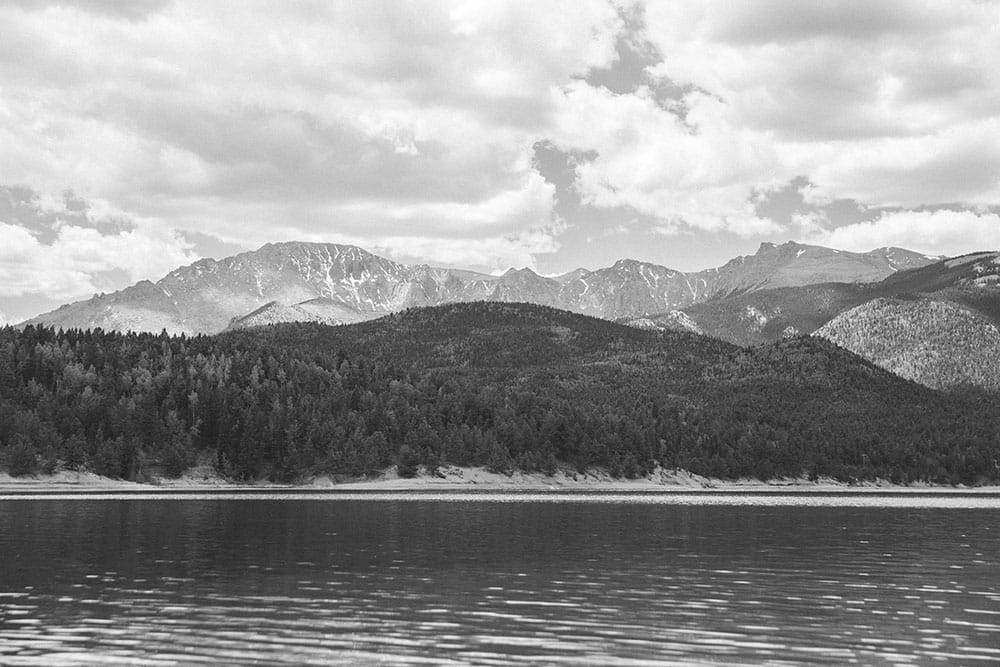Elevation of Pikes Peak
For more than 150 years, a spirited discussion has reigned about Colorado Springs’ beloved 14er Pikes Peak and her official elevation. Is she truly 14,115 feet? Why was her official elevation changed multiple times? Why does it matter? To visitors, this might seem like a rather silly discussion, but in Colorado? We take elevation very seriously. It’s hard not to when your state is home to 58 14ers — mountains exceeding 14,000 feet in elevation. (We know, we know, some people claim there are only 53 of the big peaks, others 54. That’s a whole ‘nother article!) When it comes to mountains in North America, we’re kind of a big deal and we can get persnickety about exactly how many thousands of feet above sea level a particular peak might be. We’re guessing the thin air up here has made us extra feisty.
Pikes Peak is the scenic backdrop for Colorado Springs and year-round playground for mountaineers and regular visitors. It’s only natural that locals can be rather protective of its reputation and true elevation. Pikes Peak is just too close in height to Snowmass Mountain and its 14,099-foot elevation to let people fling random numbers about. A mere 16 feet could have Colorado Springs losing its peak cred! So, what’s the story with the elevation of Pikes Peak? We’ve got a bit of history for you.
Pikes Peak’s Elevation: A Timeline
The true height of Pikes Peak has baffled folks since it was first spotted by explorers. Zebulon Montgomery Pike, for whom the peak is named, estimated the mountain be more than 18,000 feet in elevation when he encountered it. Today, we know that you have to head far up north to Canada and Alaska to find peaks of that height, but back then, Pikes Peak’s size definitely impressed the travelers and everyone took a gander at guessing her size.
- 1806: Zebulon Pike makes his first attempt to summit the peak and lends it the aforementioned 18,000-foot altitude. Considering the blizzard that pounded Pike and his men when they tried to ascend, we can’t blame him for his overcalculation. It probably felt like 18,000 feet.
- 1859: A map from the Colorado Gold Rush shows an elevation of 14,500 feet for Pikes Peak. We’re not sure where the cartographer got that number, but it’s a far closer guess than Pike’s, and not far off from the true number stated today.
- 1875: Pikes Peak shrinks a little further on the records with a noted elevation of 14,216 feet, as indicated by a stereograph of the signal Station on the summit. Of course, an additional stereograph from the same time period claimed it was 14,336 feet. Can anyone properly size this mountain?
- 1891: Pikes Peak is determined to be 14,147 feet. Some sources purport this number was calculated after the addition of the summit house tower. While we appreciate the efforts of our mountain-measuring forebears, it’s a little sketchy to count a man-made structure in elevation numbers. Good old 14,336 also makes another appearance during this time, likely causing a headache for souvenir makers throughout the region.
- 1907: The U.S. Geological Survey (USGS) sets the official altitude at 14,107. They use good old fashioned trigonometry to come up with this number. The distance between two points is measured, as are the angles between the top of the mountain and those two points. There’s more to it than that, but it involves a really fancy protractor and formulas we forgot in our freshman year of high school.
- 1909: The USGS re-sets the height of Pikes Peak to 14,109. We suspect someone forgot to carry the one, or maybe sneezed while marking the protractor in the first round. Based on the suspicion surrounding 1809’s calculations, someone could have stuck a box on the roof of the Summit House and added an extra two feet.
- 1963: The newest (at the time) Summit House is built and the height of the mountain is officially designated as 14,110 feet. That number would endure for a good 40 years and even now, you can find that number on souvenirs.
- 2002: Due to actions by Congress with regard to mountain height recalculation, Pikes Peak is designated as 14,115 feet in elevation, the number that is still stated today. The National Forest Service, likely annoyed with having to update maps and signs all the time, says no way to the change and leaves it as 14,110 feet. Several souvenirs also stick with the number of old. Thus, confusion endures.
- Today: Pikes Peak is still officially known as being 14,115 feet above sea level. While the math for measuring mountains hasn’t changed in 200 years, the results get a lot of support from information gleaned from satellite imaging and increased data points, coordinates and knowledge of the earth’s size.
That’s a hefty history of confusion surrounding the true elevation of America’s Mountain, but we think it adds to the charm. For now, Colorado Springs and the Pikes Peak region is proud to declare the current 14,115-foot elevation, no matter what a few sassy keychains and old signs might say. Chances are, the discussion won’t be ending anytime soon anyway. After all, even mountains can grow and shrink as time goes on. A little erosion here, a little wind there, and Pikes Peak might just annoy a whole new generation of rangers, tour guides and mapmakers with a whole new elevation. We’re cool with that — as long as Snowmass Mountain doesn’t beat us.





